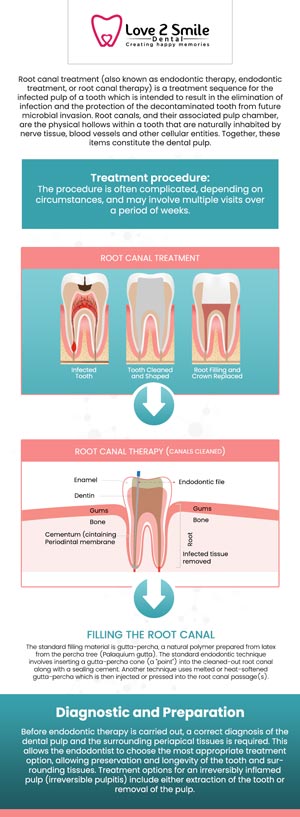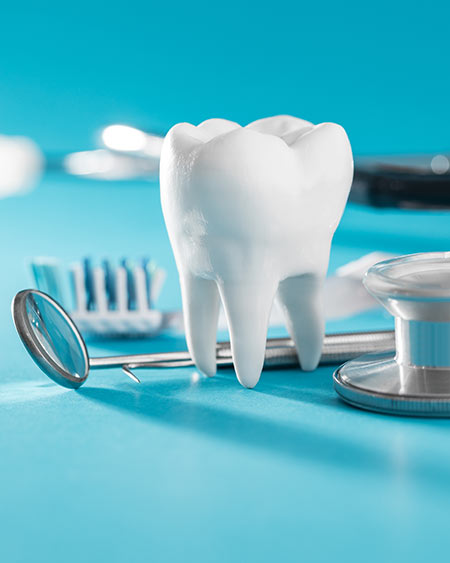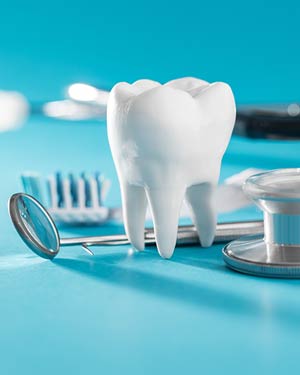Root Canal Treatment Dentist Serving Mesquite, Dallas TX
A root canal may be needed if you experience severe tooth pain, especially when chewing or touching the tooth. Sensitivity to hot or cold temperatures that lingers can also indicate damage to the tooth’s nerve. Swelling or tenderness in the surrounding gums might signal an infection. Save a badly damaged or infected tooth by getting root canal treatment at Love 2 Smile Dental Practice from experienced and trusted Dr. Divya Nagaraj DDS. Connect with us with any questions you may have or, when ready, you can schedule an appointment online at your earliest convenience. We are located at 1050 N Bryan-Belt Line Rd Ste 102, Mesquite, TX 75149.




Table of Contents:
What is a root canal procedure?
Why would I need a root canal?
What are the signs I should look for that may indicate I need a root canal?
How can I make an appointment with Love 2 Smile Dental Practice?
Root canal procedures are dental treatments completed at a dental office by Dr. Divya Nagaraj DDS by removing the soft center of the tooth, which is known as the pulp. The pulp is created with nerves, connective tissues, and blood vessels that help the tooth to grow.
A root canal is performed under local anesthesia, so the patient does not feel any pain but may feel pressure on the area in which it is being worked. A general dentist, as well as an endodontist, has the qualifications and experience to perform a root canal procedure.
A root canal treatment may need to be completed if the soft inner part of the tooth, which is medically known as the pulp, has become injured, inflamed, or infected.
The crown of the tooth, which is the area that you can see above your gums, can remain intact even If the pulp is considered dead. Removing this injured or infected pulp is the best way to help preserve the structure of the tooth.
A few common causes as to why the pulp may have become damaged include:
• Deep decay to a cavity that has gone untreated
• Multiple dental treatments on the same tooth
• A chip or crack in the tooth that has not been treated
• Injury to the tooth
• Pain in your tooth
• Swelling
• A sensation of heat within your gums
If you are experiencing any of the above symptoms, it is best to get checked out by an experienced dentist, like ours at Love 2 Smile Dental Practice. Our knowledgeable dentists will be able to examine the tooth that is causing you issues and take X-rays to confirm the diagnosis. If it is severe, they may refer you to an endodontist.
Persistent pain is one of the first signs you may need a root canal, the pain may be consistent or it may come and go, but it always returns. With tooth pain, however, it may be another issue besides needing a root canal like:
• Gum disease
• Cavity
• Pain from a sinus infection
• Damaged filling
• An impacted tooth that has become infected
Another symptom is sensitivity to hot and cold items which can often cause sharp or dull pain. Tooth discoloration can occur when the pulp of your tooth breaks down damaging the roots and giving the tooth a grayish-black appearance. Swollen gums are another factor, as the swelling occurs near the area that is having issues, and can feel tender to the touch.
Here Dr. Divya Nagaraj DDS and the dental staff will take note of anything that may need to be watched over the next few months, and take X-rays to keep on file. This is the best indicator that you have a root canal than just going off of a few common symptoms that may or may not indicate you may need a root canal.
Love 2 Smile Dental Practice offers a wide variety of dental services for the entire family, including routine check-ups, crowns, bridges, fillings, implants, extractions, and cosmetic procedures like teeth whitening and Invisalign. To make an appointment, you can call us directly to schedule your visit, or you can easily request an appointment online through our website. Our friendly team will help you find a convenient time that fits your schedule. Whether you’re due for a regular check-up or need a specific treatment, we are here to provide comprehensive, high-quality care in a welcoming environment.
Please note when requesting a time throughout the appointments page, that the time you request is not guaranteed until we contact you to confirm. For more information, contact us today or schedule an appointment online. We are located at 1050 N Bryan-Belt Line Rd Ste 102, Mesquite, TX 75149. We serve patients from Mesquite Dallas TX, Sunnyvale TX, Forney TX, Balch Springs TX, Garland TX, Rowlett TX, and surrounding areas.


Additional Services You May Like
▸ Emergency Care
▸ Smile Makeover
▸ Invisalign
▸ General Dentistry
▸ Dentures
▸ Root Canal
▸ Dental Fillings
▸ Teeth Whitening
▸ Oral Cancer Screening
▸ Tooth Extraction
▸ Dental Crown
▸ Dental Bridges
▸ Dental Check-ups & Cleaning
▸ Pediatric Dentist
▸ Cosmetic Dentistry
▸ All-on-4 Dental Implants
▸ Dental Implants
▸ Single Tooth Implants



